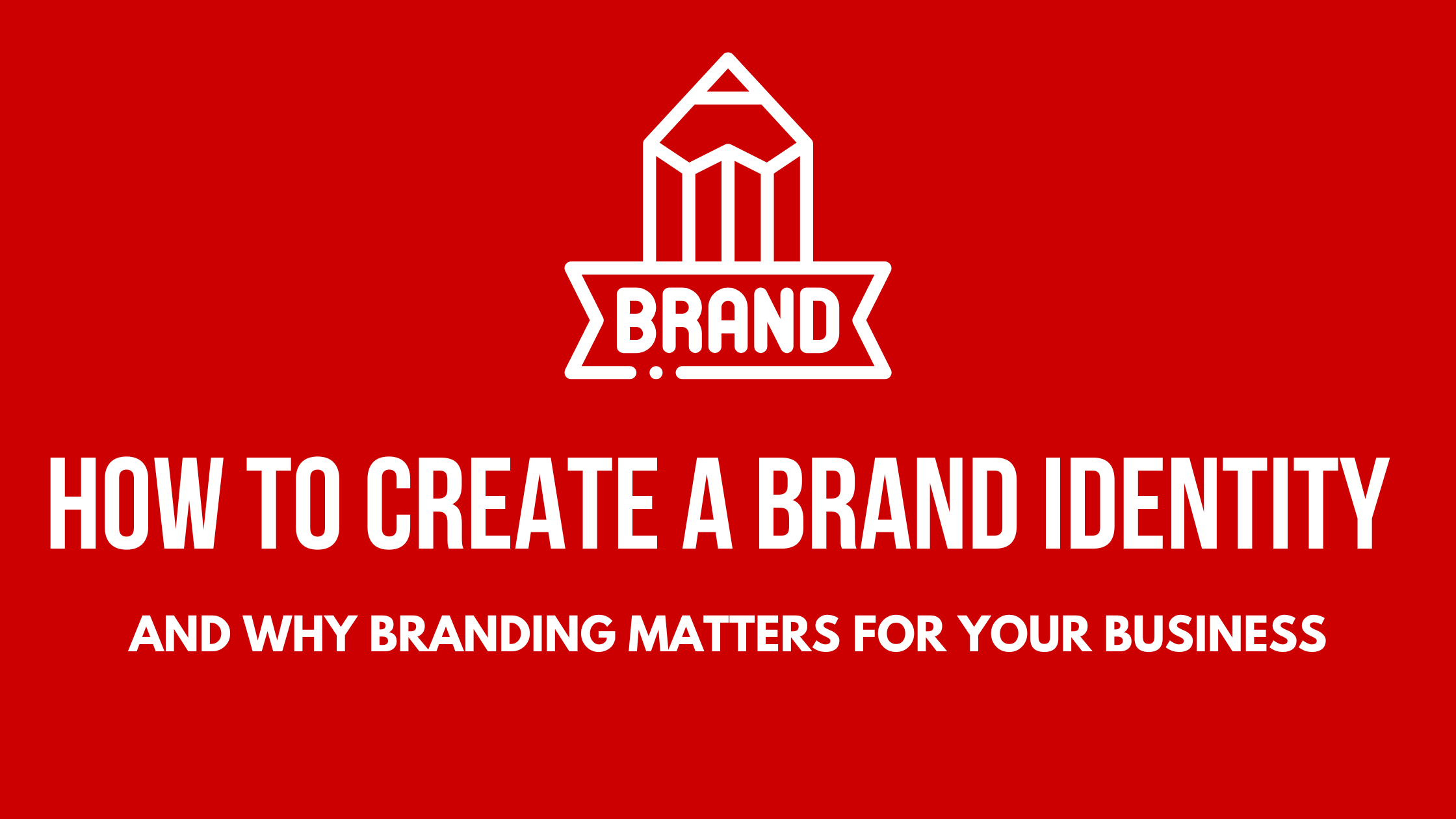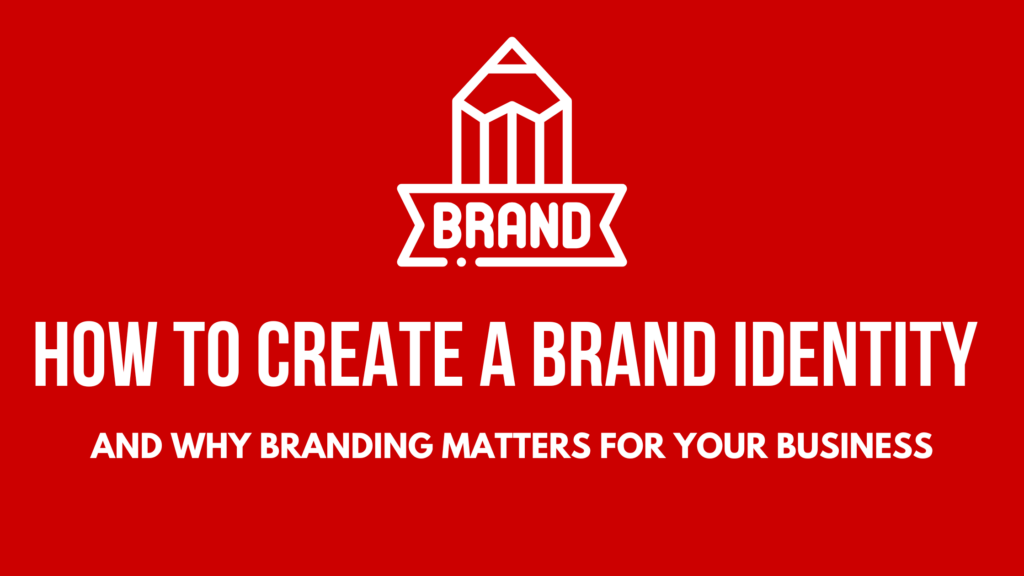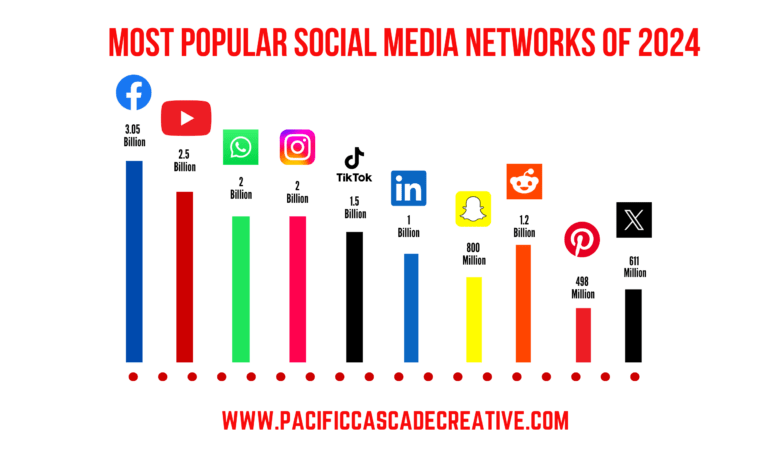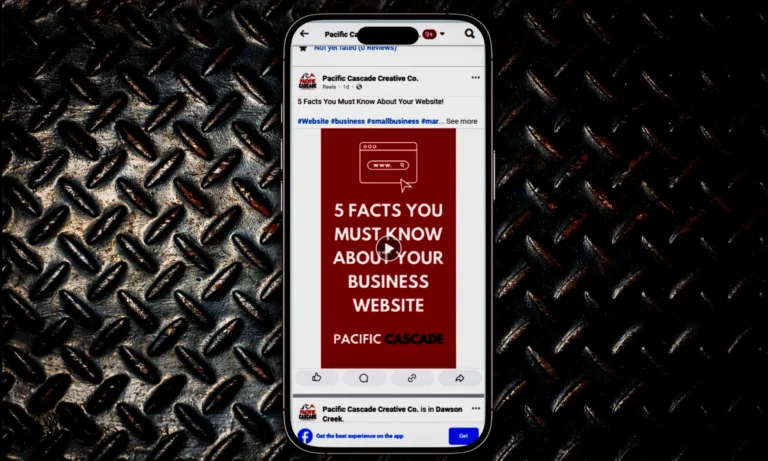

How to Create a Brand Identity and Why Branding Matters
Standing out is about more than just offering a great product or service, it’s about creating a lasting impression that resonates with your audience. That’s where a strong brand identity comes in. Your brand identity isn’t just your logo or your business name; it’s the entire experience your customers have with your company. It’s how they perceive your values, recognize your offerings, and connect with your message.
But why does branding matter so much? A compelling brand identity not only differentiates your business from competitors but also builds trust, fosters loyalty, and communicates your story to the world. Whether you’re a new business looking to establish your presence or an established company aiming to refresh your image, building a clear and impactful brand identity is crucial to your success.
In this article, we’ll break down the steps to create a brand identity that reflects your vision and appeals to your audience. From defining your core values and designing visual elements to crafting your brand voice, we’ll guide you through the process of building a cohesive identity. Along the way, we’ll explore why branding is a vital part of any business strategy and how it can help you build stronger, lasting connections with your customers. Let’s get started.
What is Brand Identity?
Brand identity is the collection of visual, emotional, and cultural elements that distinguish your business in the minds of your audience. It encompasses everything from your logo and color palette to your tone of voice and customer experience. A strong brand identity not only sets you apart from competitors but also fosters trust, loyalty, and recognition among your customers. It’s the personality of your business, communicating who you are, what you stand for, and how you want to be perceived.
Creating a brand identity is a strategic process that requires careful planning, creativity, and consistency. Let’s explore how to build a brand identity from the ground up and why it’s an essential investment for your business.
Key Components of a Brand Identity
- Visual Elements: These are the most immediately recognizable parts of a brand identity and include:
- Logo: The centerpiece of your brand identity. A logo is a visual symbol that represents your brand and is often the first impression a customer has.
- Color Palette: The specific set of colors associated with your brand. Each color evokes emotions and associations, helping to set the tone for your brand.
- Typography: The fonts and text styles you use in your branding. Typography can convey personality, professionalism, and creativity.
- Imagery and Graphics: Photographs, illustrations, and other design elements that reflect your brand’s style and tone.
- Design Style: This includes the overall look and feel of your brand’s visual elements, such as whether it is modern, minimalist, vintage, bold, or elegant.
- Verbal Elements: These include the language and tone your brand uses to communicate:
- Tagline or Slogan: A short, memorable phrase that encapsulates your brand’s essence or value proposition.
- Brand Voice: The tone, style, and language you use in all written and spoken communication. It should align with your audience and convey your brand’s personality.
- Messaging: Key themes and ideas that you consistently communicate in your marketing and customer interactions.
- Emotional and Experiential Elements: These aspects deal with how customers feel about your brand and the experiences they associate with it:
- Brand Personality: The human traits associated with your brand (e.g., trustworthy, innovative, playful).
- Customer Experience: How customers interact with your brand across various touchpoints, from customer service to product delivery.
- Brand Values: The principles and beliefs that guide your business and resonate with your audience.
How Brand Identity Works
Brand identity serves as the foundation for how your business presents itself across all platforms and touchpoints. It ensures consistency, builds recognition, and fosters trust by unifying the elements that make your business unique. When done effectively, your brand identity helps customers immediately recognize and connect with your business, creating a lasting impression.
For example, a tech company with a modern, innovative focus might have a sleek logo, a clean and minimalistic website design, and a professional yet approachable tone. In contrast, a local organic food store might use earthy colors, handwritten fonts, and a warm, friendly tone to convey its commitment to sustainability and community.
Why Brand Identity is Crucial
- Differentiation: In crowded markets, a strong brand identity helps your business stand out from competitors. It communicates what makes you unique and why customers should choose you.
- Recognition and Recall: Consistent use of visual and verbal elements makes your brand instantly recognizable. Over time, this familiarity builds trust and loyalty among your audience.
- Professionalism: A cohesive brand identity conveys that your business is well-organized, reliable, and credible, making it more appealing to customers and stakeholders.
- Connection: A well-crafted brand identity resonates with your target audience, reflecting their values and aspirations. This emotional connection fosters loyalty and advocacy.
- Foundation for Marketing: Your brand identity is the backbone of your marketing efforts. It provides the guidelines and framework for designing campaigns, content, and other materials that align with your brand\u2019s image.
In summary, brand identity is the deliberate creation of a cohesive, recognizable, and memorable image for your business. It involves a combination of visuals, language, and emotional elements that work together to define how your business is perceived and experienced. Investing in a strong brand identity is essential for building trust, connecting with your audience, and driving long-term success.
Why Brand Identity Matters to Customers
Brand identity plays a significant role in shaping how customers perceive and interact with a business. It influences their purchasing decisions, builds trust, and fosters emotional connections. Here’s a detailed explanation of why brand identity matters to customers:
1. First Impressions and Recognition
A strong brand identity creates an immediate and memorable first impression. Customers often decide whether to engage with a business within seconds, based on its visuals and messaging. A cohesive and professional identity signals that the business is credible and reliable, encouraging customers to explore further. Over time, consistent branding builds recognition, making it easier for customers to remember and choose the brand.
Example: Customers can instantly recognize brands like Coca-Cola, Apple, or Nike by their logos, colors, or even taglines. This recognition reinforces trust and familiarity.
2. Emotional Connection
Customers gravitate toward brands that align with their values, beliefs, or aspirations. A well-crafted brand identity communicates these elements, helping customers feel understood and appreciated. This emotional connection goes beyond the product or service, fostering loyalty and long-term relationships.
Example: A brand that prioritizes sustainability in its identity, such as Patagonia, resonates with environmentally conscious customers who share similar values.
3. Sets Expectations and Builds Trust
A clear brand identity helps customers understand what they can expect from a business. Consistency in visuals, messaging, and experiences reassures customers that the business is dependable and delivers on its promises. Trust is crucial for customer loyalty and repeat business.
Example: A high-end brand with a polished identity conveys a sense of quality and luxury, which customers expect to experience in their purchases.
4. Differentiation and Value
In a competitive market, customers are overwhelmed with choices. A distinct brand identity helps a business stand out, making it easier for customers to see its value and choose it over competitors. This differentiation highlights what makes the brand unique, whether it’s innovation, affordability, quality, or exceptional customer service.
Example: A small coffee shop with a cozy, community-focused brand identity can compete against larger chains by emphasizing its local roots and personalized service.
5. Enhances Customer Experience
A cohesive brand identity creates a seamless experience across all touchpoints, whether it’s a website, social media profile, or physical store. This consistency makes interactions with the brand feel familiar and reliable, improving customer satisfaction and strengthening their relationship with the business.
Example: A customer who receives the same high-quality service in-store and online, with branding that ties the experiences together, is more likely to trust and recommend the business.
6. Influences Buying Decisions
Customers are more likely to purchase from brands that they recognize, trust, and feel connected to. A strong brand identity can evoke emotions, convey professionalism, and build credibility\u2014all of which positively impact purchasing decisions.
Example: A premium skincare brand with clean, elegant packaging and scientific branding appeals to customers looking for trustworthy, high-quality products.
7. Fosters Loyalty and Advocacy
Customers who connect with a brand’s identity are more likely to remain loyal and advocate for it. They see the brand as an extension of their own values or personality, which makes them proud to associate with it. Over time, this connection turns satisfied customers into brand ambassadors.
Example: Fans of brands like Harley-Davidson or Apple often showcase their loyalty by using branded products, engaging on social media, and recommending the brand to others.
Brand identity is more than just a business tool; it’s a bridge between a company and its customers. It helps customers identify with the brand, builds trust, and creates a sense of belonging. A well-defined and consistent brand identity not only attracts customers but also ensures they remain loyal, turning them into lifelong advocates for the business. When customers feel a connection to a brand’s identity, they aren’t just buying products or services\u2014they’re buying into a story, a community, and a shared set of values.
Steps to Create a Brand Identity
1. Define Your Brand’s Core Values and Mission
Your brand identity begins with understanding the essence of your business. Ask yourself:
- What is the mission of my business?
- What values do I want my brand to represent?
- What makes my business unique?
For example, if your business values sustainability, this should be reflected in everything from your messaging to your packaging choices. These foundational elements will guide all other aspects of your brand identity.
2. Understand Your Target Audience
Knowing your audience is key to creating a brand identity that resonates. Research your ideal customers to identify their:
- Demographics (age, gender, location, income level)
- Preferences and behaviors
- Pain points and needs
This information will help you tailor your brand’s personality, tone, and visuals to connect with your audience on a deeper level.
3. Conduct Competitor Analysis
Analyzing your competitors helps you identify gaps in the market and opportunities to stand out. Look at:
- Their visual branding (logos, colors, fonts)
- Their messaging and tone
- How they position themselves in the market
Your goal is not to copy them but to find ways to differentiate your brand and offer something unique.
4. Develop Your Brand’s Visual Elements
Visual identity is a critical component of your brand. It includes:
Logo
A logo is a cornerstone of a brand’s identity and plays a critical role in shaping how the brand is perceived. It serves as the first visual element customers associate with a business and is often their initial point of interaction with the brand. A well-designed logo makes a strong and positive first impression, sparking curiosity and signaling credibility and professionalism. Over time, a logo becomes a visual shortcut for brand recognition. When customers see it consistently across products, advertisements, and platforms, it reinforces familiarity and builds trust, making it easier for them to recall the business when needed.
Beyond recognition, a logo acts as a visual representation of a brand’s mission, values, and personality. The colors, fonts, and design elements used should align with the brand’s identity and communicate its essence. For example, a luxury brand might use sleek, minimalist designs, while an eco-friendly brand might opt for earthy tones and organic shapes. A distinctive logo also helps a brand stand out in a crowded marketplace, ensuring it doesn’t blend in with competitors and making it easier for customers to choose and recommend the business.
A logo ties together all aspects of a brand’s visual identity, creating a consistent experience across various touchpoints, whether on a website, packaging, or social media. This consistency builds reliability and professionalism, reinforcing trust. Moreover, logos can evoke emotions and memories, becoming symbols of the experiences customers associate with the brand. Over time, this emotional connection strengthens customer loyalty and advocacy.
Color Palette
Colors evoke emotions and play a powerful role in how people perceive your brand. Choose a color scheme that aligns with your brand’s personality. For instance:
- Blue conveys trust and professionalism.
- Green signifies growth and sustainability.
- Red evokes energy and passion.
Typography
Fonts also communicate personality. A bold, modern font can convey innovation, while a serif font might suggest tradition and reliability.
Imagery and Graphics
Consistent use of photography, illustrations, and design elements reinforces your brand’s identity. Ensure these visuals align with your brand’s tone and style.
5. Craft Your Brand Voice and Messaging
Your brand’s voice is how you communicate with your audience. It includes:
- Tone: Formal, casual, witty, authoritative, etc.
- Language: The specific words, phrases, and style you use.
- Taglines and Slogans: Memorable phrases that encapsulate your brand’s mission and values.
Consistency in voice and messaging builds familiarity and trust with your audience.
6. Create Brand Guidelines
A brand guideline document ensures consistency across all platforms and touchpoints. It should include:
- Visual standards: Logo usage, colors, fonts, imagery
- Tone of voice: Examples of acceptable language and tone
- Application: How branding should appear in ads, social media, packaging, etc.
7. Implement and Evaluate
Once you’ve established your brand identity, it’s time to bring it to life across all channels:
- Website design
- Social media profiles
- Packaging and product design
- Marketing materials
Regularly evaluate your brand identity’s effectiveness and make adjustments as needed based on customer feedback and market trends.
Examples Of Strong Brand Identity
Here are some outstanding examples of brand identity from well-known companies, showcasing how a cohesive and strategic identity creates strong impressions, recognition, and emotional connections:
1. Apple
- Why It Stands Out: Apple’s brand identity revolves around simplicity, innovation, and premium quality. The sleek logo—a minimalist apple with a bite taken out—is universally recognizable and reflects the brand’s commitment to clean, user-friendly design.
- Key Elements:
- Minimalist logo design in monochrome.
- Consistent use of white space and clean lines in all visual materials.
- Messaging focused on creativity, innovation, and lifestyle enhancement.
- High-end, modern product packaging that aligns with their premium image.
- Impact: Apple has become synonymous with innovation and elegance, inspiring strong loyalty among its customers.
2. Nike
- Why It Stands Out: Nike’s “swoosh” logo and the iconic tagline, “Just Do It,” encapsulate action, ambition, and empowerment. The brand identity is built around inspiring athletes and fostering a mindset of perseverance.
- Key Elements:
- Dynamic and recognizable swoosh logo.
- Consistent use of bold typography and high-energy imagery.
- Focus on aspirational storytelling in marketing campaigns.
- Strong association with celebrity athletes and sports culture.
- Impact: Nike’s brand identity has elevated it from a sportswear company to a global cultural icon.
3. Coca-Cola
- Why It Stands Out: Coca-Cola’s brand identity is a masterclass in emotional branding. The script logo, vibrant red color, and emphasis on happiness and togetherness make it universally appealing.
- Key Elements:
- Timeless script-style logo.
- Signature red and white color palette that conveys energy and positivity.
- Campaigns that emphasize universal themes like friendship, celebration, and joy.
- Packaging consistency, from iconic glass bottles to modern cans.
- Impact: Coca-Cola is instantly recognizable worldwide and has built a strong emotional connection with its audience.
4. McDonald’s
- Why It Stands Out: McDonald’s golden arches are one of the most recognized symbols globally, representing accessibility, consistency, and family-friendly values.
- Key Elements:
- Iconic golden arches logo.
- Bold red and yellow color palette that evokes hunger and happiness.
- Playful and approachable typography and design.
- Consistency in the look and feel of restaurants and packaging across the world.
- Impact: McDonald’s brand identity ensures that customers know exactly what to expect, no matter where they are.
5. Starbucks
- Why It Stands Out: Starbucks’ brand identity focuses on a premium, community-centered coffeehouse experience. The green mermaid logo conveys sophistication and sustainability.
- Key Elements:
- Iconic mermaid logo, instantly recognizable even without the brand name.
- Green color palette symbolizing growth and sustainability.
- Warm and inviting interiors that create a consistent in-store experience.
- Personalization (e.g., writing customer names on cups).
- Impact: Starbucks has cultivated a loyal customer base by aligning its brand identity with a lifestyle of quality, relaxation, and community.
6. Tesla
- Why It Stands Out: Tesla’s brand identity revolves around innovation, sustainability, and luxury. The minimalist logo and sleek designs reflect its cutting-edge technology and premium positioning.
- Key Elements:
- Minimalist “T” logo that represents a stylized electric motor.
- Modern typography and bold, clean lines in all branding materials.
- Focus on innovation and eco-friendly technology in messaging.
- Consistent design aesthetics across vehicles, website, and marketing.
- Impact: Tesla’s brand identity has positioned it as a leader in the electric vehicle industry, appealing to tech-savvy, environmentally conscious consumers.
7. LEGO
- Why It Stands Out: LEGO’s brand identity centers around creativity, imagination, and fun. Its colorful logo and interactive products evoke nostalgia while appealing to children and adults alike.
- Key Elements:
- Bright and colorful block-shaped logo.
- Emphasis on hands-on creativity in marketing and product design.
- Partnerships with franchises like Star Wars and Harry Potter to connect with diverse audiences.
- Family-friendly messaging and engaging content (e.g., LEGO movies).
- Impact: LEGO has built a universally loved brand that transcends age and geography, focusing on the joy of building and creating.
8. FedEx
- Why It Stands Out: FedEx’s brand identity is built around trust, reliability, and speed. The logo’s hidden arrow between the “E” and “x” symbolizes forward movement and efficiency.
- Key Elements:
- Clean, bold typography with the iconic hidden arrow.
- Consistent use of purple and orange for professionalism and energy.
- Messaging focused on reliability and logistics expertise.
- Uniform branding across packaging, vehicles, and uniforms.
- Impact: FedEx’s identity reinforces its position as a global leader in logistics and delivery services.
9. Spotify
- Why It Stands Out: Spotify’s brand identity is centered on personalization and accessibility to music. The green logo and modern design appeal to tech-savvy, music-loving audiences.
- Key Elements:
- Simplistic sound wave-inspired logo.
- Vibrant green color, paired with bold black and white accents.
- Playful and dynamic marketing campaigns (e.g., “Spotify Wrapped”).
- Focus on user experience and personalization in-app design.
- Impact: Spotify has become synonymous with music streaming by aligning its brand identity with personalization, discovery, and innovation.
These examples show how cohesive and thoughtful brand identities not only define a business but also create lasting impressions, build trust, and foster emotional connections with audiences. A well-crafted brand identity ensures that businesses resonate with their target customers and stand out in competitive markets.
Conclusion
Creating a brand identity is more than just designing a logo or choosing colors; it’s about crafting a comprehensive and cohesive image that represents your business’s values, mission, and personality. A strong brand identity not only differentiates your business from competitors but also builds trust, attracts your ideal audience, and supports long-term growth.
If you’re ready to establish or refine your brand identity, don’t leave it to chance. Partner with experts who can help you create a cohesive and impactful brand that resonates with your audience and positions your business for success. Contact us today to start building a brand identity that stands out and drives results.






